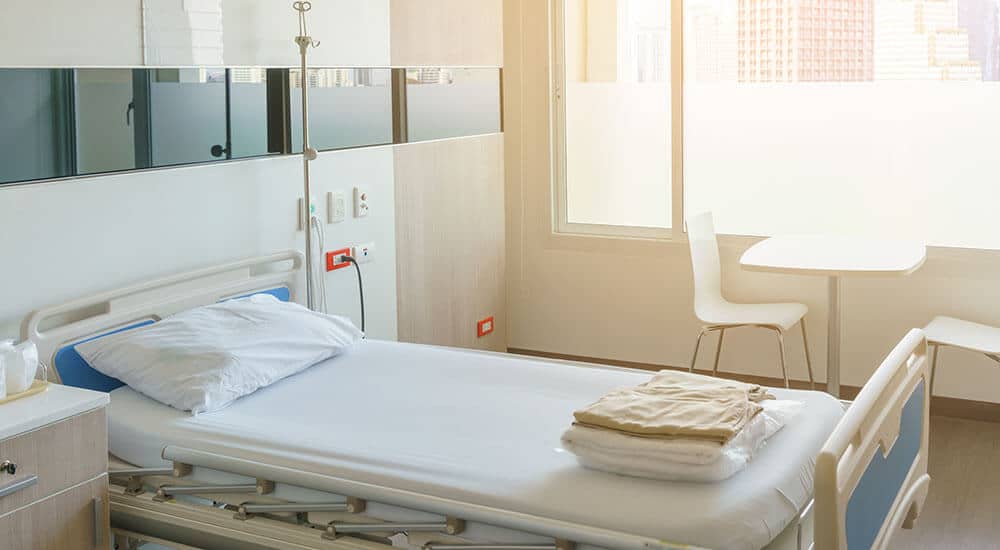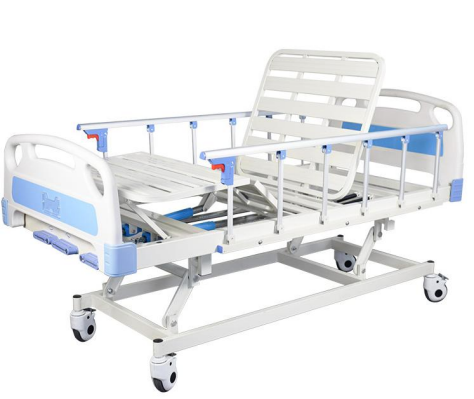Not known Factual Statements About Hospital Beds For Home Use
Table of ContentsThe 8-Minute Rule for Hospital Beds For Home UseAll about Hospital Beds For Home UseThings about Hospital Beds For Home UseThe 4-Minute Rule for Hospital Beds For Home UseSome Known Details About Hospital Beds For Home Use Little Known Questions About Hospital Beds For Home Use.Hospital Beds For Home Use - The Facts
There are 3 major types of hospital beds: guidebook, semi-electric, and fully-electric. These beds use hand cranks to adjust the bed's height and raise and decrease the head and the foot.
Semi-electric beds have an electrical motor to raise and reduce the head and foot sections of the bed. People and caregivers adjust the placing by pressing buttons utilizing a hand necklace. The elevation of the bed is readjusted manually with a hand crank. Full-electric beds have an electrical motor that can increase the head and foot areas of the bed in addition to the whole elevation and positioning of the bed.
The Best Strategy To Use For Hospital Beds For Home Use
There are a number of types of hospital beds, each designed to fulfill details individual demands. Right here are some common types: This is the most typical type of health center bed, created for basic medical usage.
Reduced to the ground than a typical bed. This kind of bed is developed for bigger patients, with a wider framework and greater weight capacity than a basic bed. This type of bed is designed particularly for kids, with smaller sized sizes than a standard bed. Unique attributes such as complete length side rails and cartoon design.
This kind of bed is created for seriously unwell people that call for open surveillance and specialized clinical tools such as ventilators and infusion pumps. This type of bed is made for usage throughout labor and distribution, with flexible positions and functions to sustain the mom and infant throughout the birth process.
The Facts About Hospital Beds For Home Use Revealed
Multiple feature and the devices perform expanding traction to different components of the vertebra and the extremities without moving the body. These are just a few examples of the sorts of hospital beds available. The details type of bed utilized will rely on the person's condition, medical needs, and various other variables.
Right here is things you need to know. A one-function healthcare facility bed is a medical bed that enables a person to move only the head or foot area up or down. A 2 function healthcare facility bed typically describes a kind of clinical bed that has 2 adjustable functions to aid patients in healthcare facilities or care facilities.

Getting My Hospital Beds For Home Use To Work
A 7-function ICU bed is a sort of medical bed that offers a number of flexible functions to support seriously ill individuals in an extensive treatment system (ICU) (hospital beds for home use). The 7 features typically consist of: Backrest change: The back-rest can be gotten used to numerous angles to aid the person stay up or lie down conveniently
Height adjustment: The bed can be raised or reduced to make it simpler for clients to enter and out of bed, and for caretakers to supply treatment. Trendelenburg setting: The entire bed can be tilted to promote blood circulation and circulation in the body. Reverse Trendelenburg placement: The bed can additionally be tilted in the opposite instructions to promote blood flow and circulation in the upper body.
1. What Dimension is a Hospital Bed? 2. Just how much Does a Hospital Bed Expense? 3. Why Do Hospital Beds Have Side Bed Rails? 4. What Are The Key Healthcare Facility Bed Components?. While more budget friendly than electrical designs, these beds call for physical initiative for modifications. The main advantages of hand-operated beds are their cost and reliability, as they do not rely upon electrical power. The demand for hands-on initiative can be a restriction in situations where quick changes are necessary or where top article caregivers deal with physical obstacles.
The Facts About Hospital Beds For Home Use Uncovered
Semi-electric medical facility beds supply a balance of handbook and electrical controls. These beds offer an excellent middle ground between handbook and totally electrical alternatives, offering simplicity of use without the full expense of electrical designs.
Semi-electric beds are well-suited for patients who need modest modifications to the head and foot areas yet can manage without constant elevation modifications. This makes them a cost-effective option for those looking for comfort and convenience without the need for constant repositioning. Completely electrical hospital beds include electric controls for smooth changes to the elevation, head, and foot sections.
Specialized medical facility beds, such as ICU beds, lasting treatment beds, and bariatric beds, are carefully created to address specific clinical requirements. These beds offer tailored take care of varied person teams, boosting both outcomes and comfort. In the adhering to areas, we will explore the main sorts of specialized medical facility beds, detailing their specific benefits and applications.
With years of experience in producing electric straight actuators - hospital beds for home use and close cooperation with the healthcare sector, TiMOTION is well-positioned to offer dependable health care options. Our vertically integrated company takes care blog here of every step of the production procedure, from style to actuator assembly, guaranteeing we provide outstanding value and personalized remedies customized to your particular needs
Hospital Beds For Home Use Can Be Fun For Anyone

To get more information about integrating these modern technologies into your products, contact us today. Further analysis:.
Data is sourced from the Medicare Cost Report.

Facts About Hospital Beds For Home Use Uncovered
A hospital bed is a bed developed particularly for medical purposes. It is not only an area for patients to rest, however also a platform for clinical operations. Unlike regular home beds, medical facility beds normally have flexible attributes, which can assist in medical personnel to make various adjustments according to the demands of people, such as transforming the height, disposition, and support angle of the back and legs of the bed.